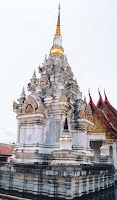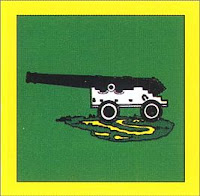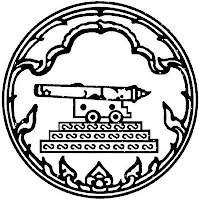- to check the names of the villages, mark those which are in error in red and state the reason why the name was or needs to be changed
ตรวจสอบความถูกต้องของข้อมูลจำนวนและชื่อหมู่บ้าน โดย "หมู่บ้าน" ให้หมายถึงเฉพาะหมู่บ้านที่ยังคงมีการแต่งตั้งตำแหน่งกำนัน ผู้ใหญ่บ้าน ฯลฯ ตามกฎหมายว่าด้วยลักษณะปกครองท้องที่ ทั้งนี้ หากมีการแก้ไขเปลี่ยนแปลงชื่อหมู่บ้านให้พิมพ์เป็นตัวอักษรสีแดงพร้อมทั้งระบุเหตุผลในช่อง "หมายเหตุ" ด้วย
- get the coordinates of the central location of the village, usually the house of the village headmen
พิกัดตำแหน่งของหมู่บ้าน ให้บันทึก ณ บริเวณชุมชนใหญ่ในหมู่บ้าน หรือสถานที่สำคัญของหมู่บ้านซึ่งเป็นที่รู้จักกันโดยทั่วไปในหมู่บ้าน (ยกเว้นที่ทำการผู้ใหญ่บ้าน หรือสถานที่ส่วนบุคคลซึ่งสามารถเปลี่ยนแปลงได้)
- provide these coordinates in the UTM coordinate system
การบันทึกค่าพิกัด ให้บันทึกในระบบ UTM พื้นหลักฐาน Indian 1975 (แผนที่ 1 : 50,000 ชุด L 7017) โดยบันทึกค่าพิกัดตะวันออก 6 หลัก ค่าพิกัดเหนือ 7 หลัก (ยกเว้นจังหวัดภาคใต้บางจังหวัด ค่าพิกัดเหนือ 6 หลัก)
- list the areas covered by a municipality which can have the post of a village or subdistrict headman get annulled
คำอธิบาย ตำบล ท หมายถึง ทั้งตำบลนั้นอยู่ในเขต ทน. หรือ ทม. หรือ ทต. ซึ่งได้มีประกาศ มท. ยกเลิกตำแหน่งกำนัน ผู้ใหญ่บ้าน แล้ว
Google however only finds these sheets for half of the provinces, and according to the editing history stored by Office they were created within the last months. Google does list any pages which actually link to these files which might give more explanation on them, nor have I noticed anything in the announcements on the DOPA website.
I have worked through the file on Nakhon Si Thammarat already, and that gave me several name differences to those I had compiled from various sources (e.g. ThaiTambon or the Gazette announcements). Just listing those for Chulabhorn district
as it has only a few but different kinds of differences
- Mu 2 of Ban Khuan Mut listed as Ban Nai Wang (บ้านในวัง) instead of Ban Na Mo Bun (บ้านนาหมอบุญ)
- Mu 1 of Khuan Nong Khwa spelled บ้านสมควร instead of บ้านสมควน
- Mu 4 of Na Mo Bun named Ban Kaho Nuea (บ้านกาโห่เหนือ) instead of Kaho (บ้านกาโห่)
- Mu 6 of Na Mo Bun named Ban Huai Kaeo (บ้านห้วยแก้ว) newly created
- Mu 4 of Khuan Nong Khwa named Ban Tuan Trab (บ้านควนตราบ) newly created
- Mu 4 of Ban Cha-uat named Ban Tha Yang (บ้านท่ายาง) newly created









